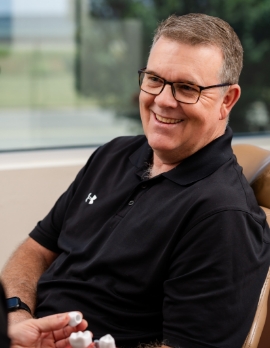October 3, 2025

Medically Reviewed by Dr. Bryce Lamer
Recovering from wisdom teeth removal is an important part of the healing process and a time to let your body rest as you get back to feeling like yourself. For people who are usually on-the-go and active, this pause can feel challenging, but easing back into movement at the right pace makes recovery smoother. With a few simple guidelines, you can return to your favorite activities while keeping your healing on track.
How Long After Wisdom Tooth Removal Can I Work Out?
The timeline for returning to activity depends on the type of exercise and how your body responds to the procedure.
- First 24 to 48 hours: Rest completely. Avoid all physical activity, even light exercise.
- Days 3 to 5: Gentle movement, such as short walks, is usually fine if you feel up to it. Keep your heart rate low.
- After 1 week: Many patients can ease into light workouts like stretching, yoga (without inverted poses), or casual walks.
- After 2 weeks: More vigorous exercise, including running, weightlifting, and high-intensity routines, may be safe for most patients. Timing can vary, so start slowly and pay attention to your comfort level.
Activities to Avoid Following Wisdom Teeth Removal
- Heavy lifting or straining (can raise blood pressure and cause bleeding)
- Running or other high-impact workouts (may increase swelling)
- Sports or contact activities (risk of trauma to the mouth or jaw)
- Swimming (pool or lake water can expose healing areas to bacteria)
Safer Activity Options During Recovery
The following activities allow you to stay active without slowing your recovery:
- Gentle walking
- Light stretching
- Low-intensity movement
Signs You May Be Overdoing It
Stop exercising and contact your oral surgery team if you notice:
- New bleeding from the surgical sites
- Throbbing or worsening pain
- Swelling that increases instead of decreases
- Dizziness or lightheadedness
A Clear Recovery Plan
Think of your recovery as a gradual progression rather than a single “all clear” moment. A simple plan helps you balance rest and activity.
- Prioritize rest in the first 48 hours. Sleep and hydration are key.
- Add light activity after several days. Short walks around your home can support circulation without stressing your mouth.
- Increase activity gradually after about two weeks. Begin easing back into more intense workouts, scaling up only as your recovery allows
Supporting You Through Recovery
Every patient heals differently. While some people may feel ready for light exercise within a week, others may need more time before returning to full workouts. The safest approach is to listen to your body and follow the guidance of the OKC-OMS team. Our team is here to support you through every step of the recovery process so you can return to your daily activities with confidence.



